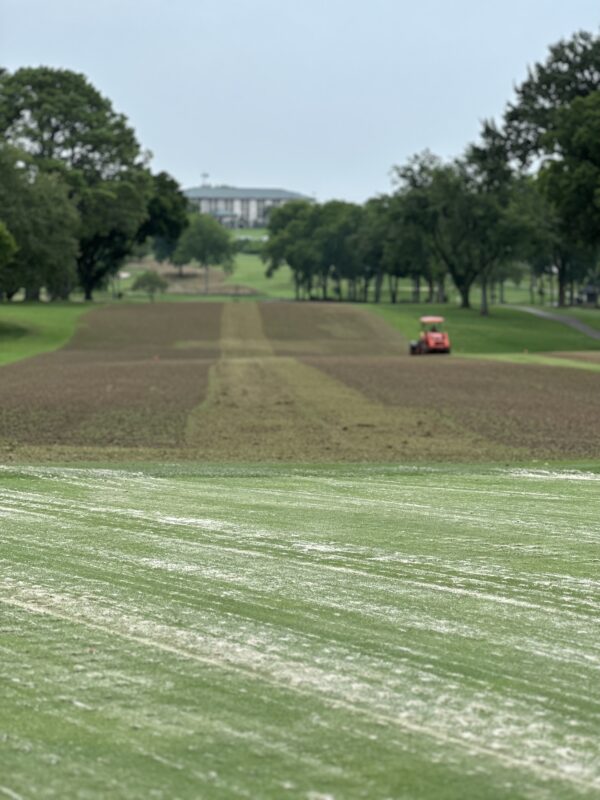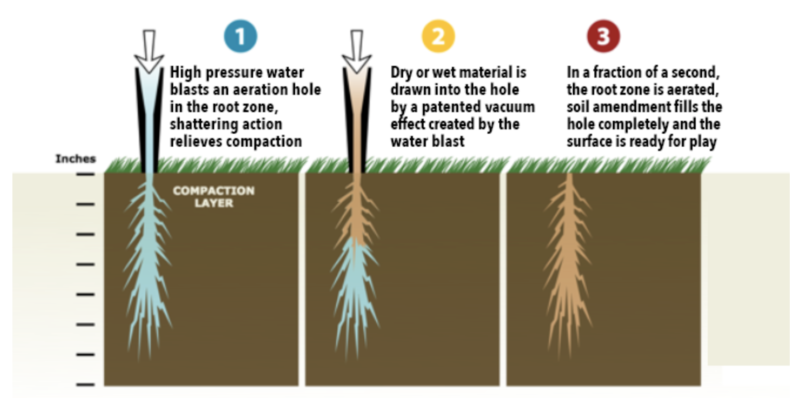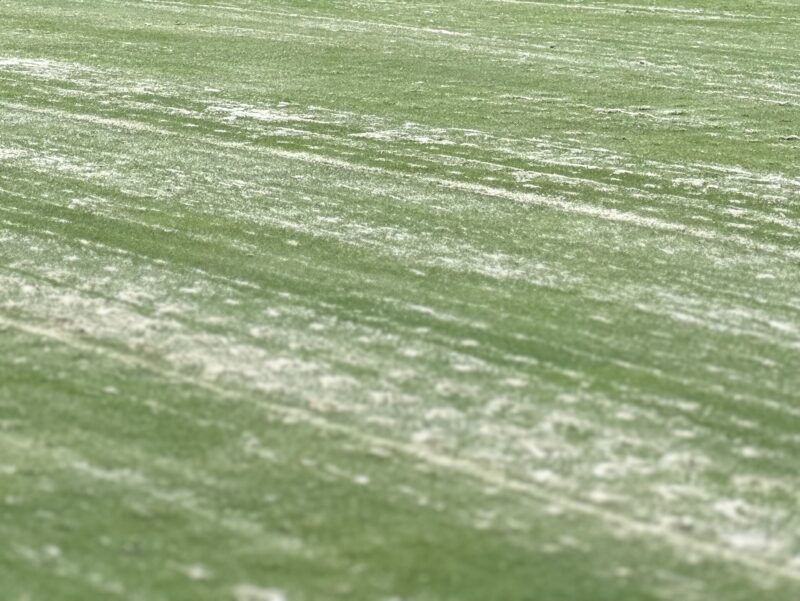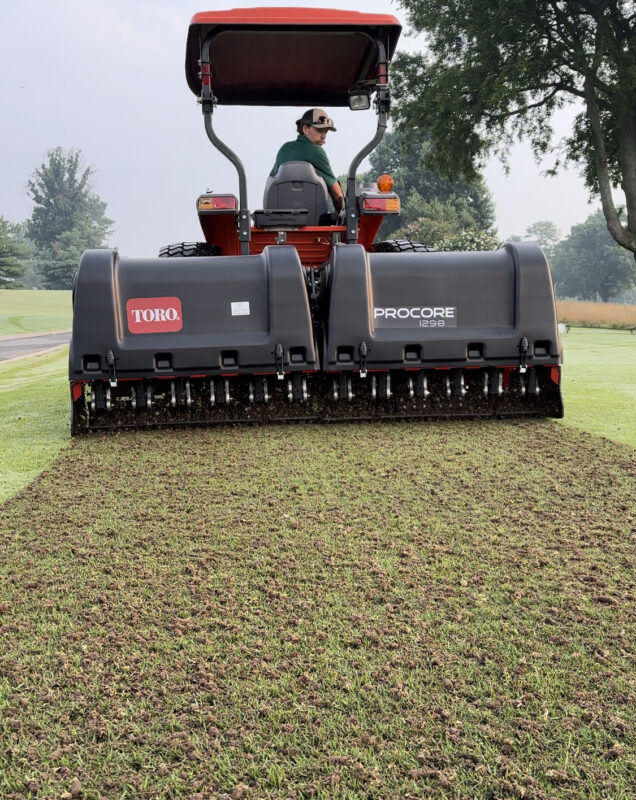
We appreciate you allowing us uninterrupted access to the golf course for a few extra days in the middle of the summer. It’s been all hands on deck for the agronomy staff as we are actively performing three separate turf venting processes: dryjecting the greens and aerating and verticutting the fairways and tees.
Our roller coaster weather of hot, dry weeks relieved with heavy rain, followed by hot, humid conditions can leave the turf roots unable to absorb water fast enough. When this happens, the entire plant suffers and it can be lethal. These conditions can also lead to the onset of problematic pests.
One way to combat these issues is through venting. Venting makes lots of small holes that break the surface and create channels for gas exchange. This is beneficial because it helps dry out the upper profile where the roots are most active and dense.
You are very familiar with the less-than-popular, but necessary, periodic aerations we perform on the greens several times each year. And in the fall, we have historically had good results from aerating the fescue rough. But we’ve never taken the step of venting all of our fairway turf. This summer you have seen us sodding larger than usual areas in the fairways due to last winter’s extreme flash freeze. We have tried to help other struggling fairway areas recover with targeted local aeration. But it is time we take the extra step and vent all of the fairways and tees.
Click to view a sample of this week’s activities in the video below.
DryJect Process on Greens
The DryJect process uses a high-speed, water-based injection system to blast aeration holes through the root zone to fracture the soil. The patented vacuum technology simultaneously fills holes to the surface with high volumes of sand or amendment.


Using DryJect, we can relieve compaction, increase water infiltration, reach the root zone with oxygen and amend the soil with high volumes of material all at the same time. Plus the DryJect one-step service leaves the surface free of plugs; it’s clean, smooth, and ready to play. If you noticed in the video, this process requires a lot of manual labor and sand movement. The agronomy team did a great job to complete all the greens in record time on Monday.
Aerating and Verticutting Fairways and Tees

This is the first time in memory that we have attempted a surface venting project on the scale of all fairways and tees. We used both our Toro ProCore tow-behind and walk-behind units to perform what you typically think of as aeration – removing small soil cores from the turf. The resulting holes allow excess moisture to evaporate and promote gas exchange in the soil, resulting in stronger root systems and turf that is better able to tolerate golfer traffic. We followed that with a separate tow-behind Verticut unit using vertical blades to remove thatch (old plant material) buildup. Think of it as vertical mowing. Getting rid of thatch helps the turf to breathe easier and better absorb nutrients.
Obviously all of this punching and cutting leaves a lot of material behind that needs to be cleared away. This extensive task was disrupted by Wednesday’s rain, so please be patient over the next few days as we work to get everything wrapped up.
We will begin to see the benefits of these efforts over the coming weeks and our Bermuda should hold strong to the finish line of its growing season in October. More importantly, our turf will be in a strengthened position entering dormancy and better equipped to handle winter.
As always, if you have any questions feel free to email me at Tyler.Ingram@invitedclubs.com.
